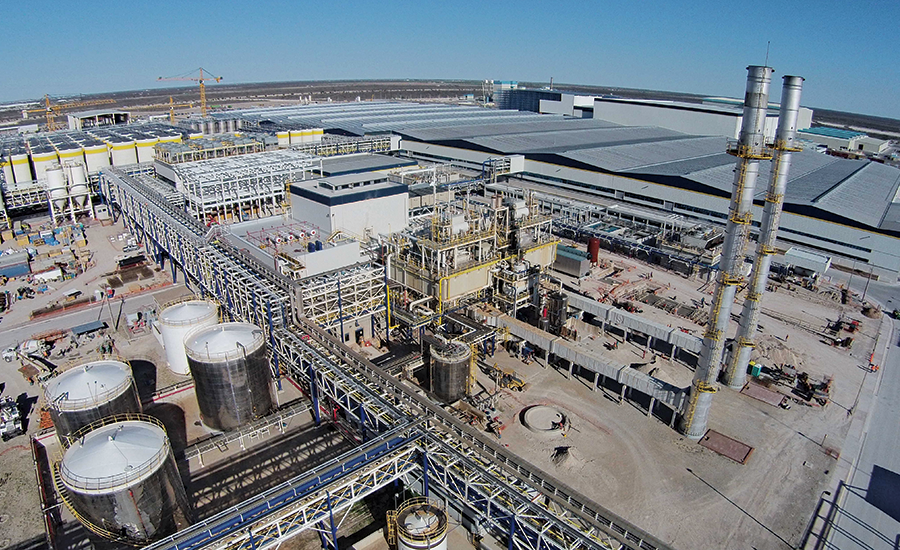Global Sourcebook
Projects Still Advance in Year of Uncertainty
For now, China sees boost tied to climate-change commitments

Brewery expansion will double capacity and add technological features.
PHOTO COURTESY GILBANE BUILDING COMPANY
In a year that has seen many surprising political shifts, the International Monetary Fund’s global outlook, released in October, shows that worldwide economic growth is expected to slow to 3.1% in 2016, then increase to 3.4% next year. While it is still too early to determine the effects of the U.S. presidential election on manufacturing construction, one U.S. construction executive speculates that projects in Mexico could be affected if the Trump administration make changes to the North American Free Trade Agreement. For now, manufacturing outside of the U.S. is still a lucrative business.
“We are seeing more new manufacturing plant opportunities abroad versus domestically,” says Donald C. Oberlies, vice president of Alberici Constructors. But capital funding decisions for projects are taking nine to 12 months longer than in past years, he notes. “Most recently, we have seen this on several projects in Canada and Mexico,” says Oberlies.
|
Click Here to View ENR's 2016 Global Sourcebook |
In Mexico, food and beverage production is experiencing a boost, says Michael McKelvy, president and CEO of Gilbane Building Co. “For Gilbane, we see continued construction growth in our target markets in Mexico for several years,” he adds. “This is true for us [in the food and beverage markets], but for other markets like auto manufacturing, there may be a flattening in the growth or a decline for a period of time.”
The firm, in a joint venture with Alberici Constructors, is providing construction management and general contracting services for the renovation and expansion of a Constellation Brands brewery in Nava, Mexico. Now in its final phase, the project will double the plant’s capacity, adding a new brewery building, a packaging building and warehouses.
Set to be one of the largest and most technologically advanced in the world, the brewery will employ on-site glass production as well as an automated system that uses computer controls to place and retrieve loads in designated storage areas. The project is set to be completed in March 2018.
In China, the service industry accounts for more than 50% of the economy, replacing manufacturing as the country’s core market in the past three years. Just 8% of companies invested in fixed assets in the manufacturing sector in 2016’s third quarter, according to a survey of 2,000 major companies carried out by a Beijing-based business school.
However, change could be on the horizon. As of a result of its commitment to the Paris climate agreement, the Chinese government is providing financial and other incentives too boost production of renewable energy, environmental protection and pollution-control equipment.
The manufacturing sector also is seeing a sharp rise in the production of robots and drones. The International Federation of Robotics says shipments of multipurpose industrial robots in China totaled about 75,000 in 2015, double the amount in 2013. Shipments are expected to double once again, to 150,000, by 2018.
Chinese manufacturers are relying more on robotic arms to meet the demands for higher quality and counter the trend of falling exports. China faces a severe labor shortage due to three decades of its “one child” policy. Other companies have introduced the idea of “cobotics,” in which robots and workers complement each other. But these moves are not enough to solve the problems faced by so-called traditional manufacturers, which still form the bulk of the sector. Many are dealing with overcapacity, low exports and weakening domestic sales, says Beijing professor Gan Jie, although she notes that production has stabilized due to an expansion in demand for consumer goods.
Even so, others see future global impacts. “President-elect Trump’s stance on China appears to be very aggressive. He virtually blames the country for the loss of manufacturing jobs in America,” says Ann Bentley, U.K.-based global chairman of cost consultant Rider Levett Bucknall. “If this provokes an all-out trade war between the two biggest economies in the world, it could result in global destabilization, which will be bad for the all sectors of the world economy, construction included.”




